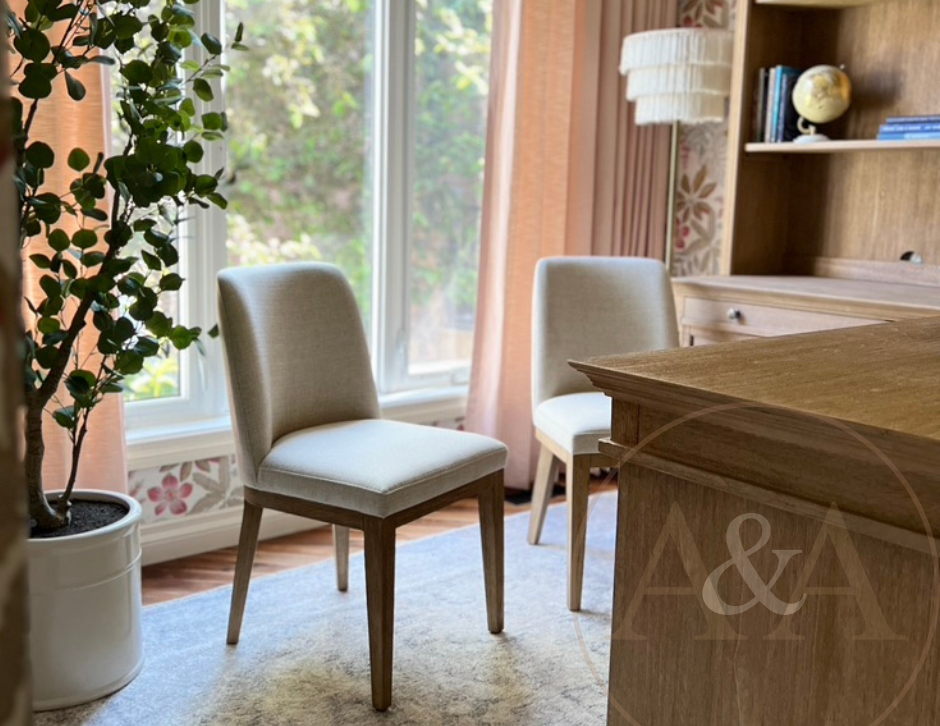How to Bring Alberta’s Outdoors In: Biophilic Interior Design in 2025
- A&A
- May 15
- 3 min read

In 2025, the world of home décor is shifting toward spaces that don’t just look good—they feel good. That’s where biophilic design comes in. Rooted in the idea that humans thrive when connected to nature, biophilic interiors weave natural materials, patterns and light into the home. At Auburn & Ash, we believe your space should be a sanctuary, and biophilic principles are the perfect way to bring Alberta’s serene outdoors inside.
What is Biophilic Interior Design?
Biophilic design goes beyond adding a few houseplants to your living room. It’s a style philosophy that integrates natural elements, textures, and rhythms into the built environment. This might include incorporating wood, stone or wool in your furniture and textiles; ensuring natural light is abundant; or using layout principles that promote airflow and connection to the outdoors.
The term itself comes from “biophilia,” meaning a love of life or living systems. Studies have shown that exposure to natural environments can reduce stress, support mental health and even improve productivity. In the home, these benefits can show up as better sleep and a subtle sense of calm.
Alberta Interior Design Inspiration, Naturally
With sweeping landscapes, tranquil forests and dramatic skies, Red Deer and all of Alberta offers no shortage of biophilic inspiration. At our Red Deer design studio, we use nature as a guide for textures, tones and spatial flow. Whether it’s the earthy palette of a Rocky Mountain sunrise or the clean, open feeling of prairie fields, your unique Auburn & Ash project can reflect this connection.
We often recommend starting with curated home décor pieces that incorporate organic shapes or natural fibres. Think woven baskets, handcrafted ceramics, and reclaimed wood shelving. These small touches can ground a space and spark a full-room transformation.
Natural Light & Layout in Your Interior Design
Another cornerstone of biophilic design is embracing natural light and views. Alberta’s long summer days are perfect for this. Arranging seating areas near windows, choosing light-filtering window treatments, and using reflective surfaces (like glass or metallics) can help amplify available daylight.
Open floorplans and mindful room flow also support this design style. Avoiding harsh boundaries between indoor and outdoor spaces—through patio doors, garden-facing rooms or large windows—helps bring the outside world in. This not only enhances mood but makes rooms feel more expansive.
Design Your Space with Layers of Texture & Fragrance
Texture is everything in biophilic interiors. Try mixing stone, linen, jute and soft cotton for a layered, earthy feel. Our clients love pairing a tactile rug with designer candles to add scent and warmth to their space. Candles made with essential oils like cedarwood, sage or lavender can elevate wellness while tying in the home’s natural theme.
Want to take it further? Add soundscapes, diffusers, or water features to tap into more of the senses. The Canadian Society of Decorative Arts recommends multisensory design as a way to enrich spaces with deeper meaning and better livability.
A Style That Lasts
Biophilic design is more than a trend—it’s a return to what feels good. And unlike fast décor fads, this approach stands the test of time. The team at Interior Design Magazine calls biophilic interiors a long-term design shift that supports healthier, happier living.
At Auburn & Ash, our interior design portfolio is filled with examples of calm, nature-inspired rooms that celebrate Alberta’s landscape while supporting daily life. Whether you’re updating one room or planning a full renovation, we’ll help you find the balance between modern living and natural connection.
Let nature lead the way this year. Explore biophilic styling with Auburn & Ash and discover how effortless it can be to bring the outside in—right here in the heart of Red Deer.




This piece really captures what biophilic design is all about blending comfort with nature. Even something like an ivy plant pot can instantly freshen up a room and connect the space to the outdoors in such an effortless way.